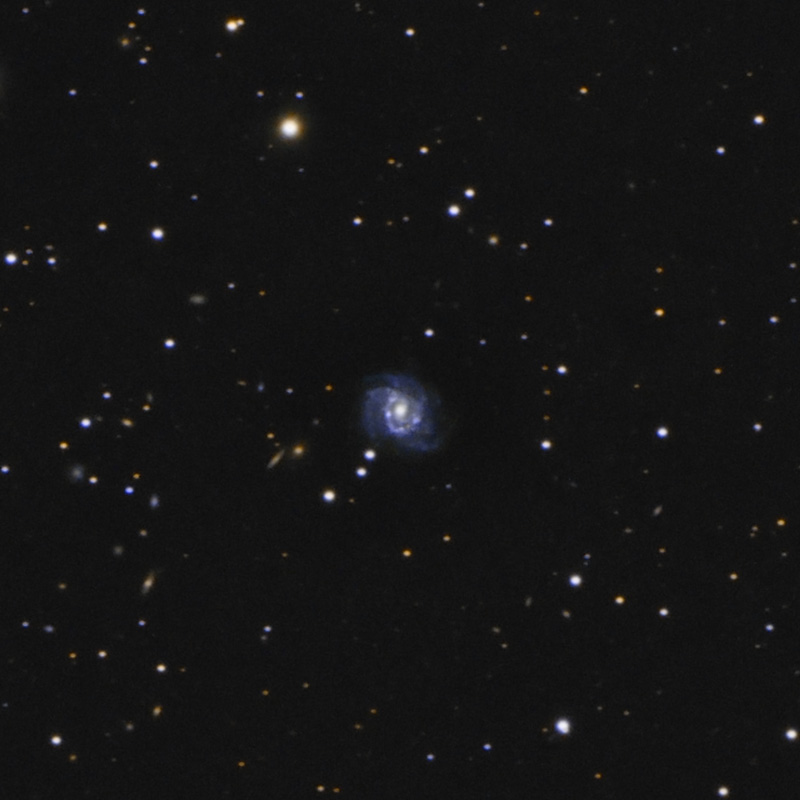| Description | Images |
Object name: NGC0140Designation(s): NGC0140, NGC 140 is a rather strange spiral galaxy in western Andromeda about 280 million light-years distant judging by its redshift. NED and the NGC project classify it as Scd: The colon indicating some question about this classification. I classify it is strange. It seems to have only one main arm that comes out of the northern end of the galaxy which wraps around to the east then south and then back north making a three quarters ring around the galaxy. At this point, it seems to split in two. The shorter part continuing north-northwest then suddenly wrapping to the east-northeast where it ends. The longer half makes a sharp bend to the east-northeast to travel under the shorter branch. When it gets about as far east as the upper branch it suddenly bends south again. Other short arm segments can be seen off the three quarters ring at the south end going west. The ring portion of the one main arm has many knots of star formation which NED indicates are HII regions. I found no papers on this galaxy to shed light on how it got its strange arm structure. It was discovered by Truman Safford on October 8, 1866. Related Designation(s):2MASS J00312045+3047329, 2MASX J00312048+3047329, 2MASXi J0031204+304732, CGCG 0028.7+3031, CGCG 500-038, IRAS 00287+3031, IRAS F00287+3030, MAPS-PP O_1244_0344359, MCG +05-02-021, NGC 0140, NGC0140, NSA 127120, NVSS J003120+304727, PGC 001916, UGC 00311, USGC U020 NED03, UZC J003120.5+304733, |

